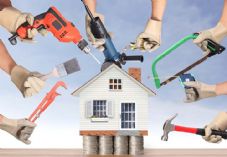UK DIY News
Barclaycard: Coronavirus Cements Contactless As Preferred Instore Payment Method
- Coronavirus has cemented contactless as the preferred way to make in-store payments
- The total value of all contactless transactions grew by 7.0 per cent last year, despite shops being closed during lockdowns and the rise of online shopping
- The average value of payments made using contactless increased by 29 per cent following the introduction of the £45 limit
- Contactless users made an average of 141 payments in 2020, worth a total of £1,640
- Over-65s were most likely to embrace the technology for the first time in 2020
- Barclaycard has a long history of payments innovation in the UK, launching the UK’s first contactless payments card in 2007
New data from Barclaycard reveals that contactless technology has emerged as one of the big winners of 2020, accounting for 88.6 per cent of all eligible card transactions*.
As the safest, fastest and most responsible way to pay in-store, tap-and-go has become the obvious choice for both consumers and businesses, to help prevent the spread of coronavirus.
Not only does it allow consumers to pay without touching card terminals or handling cash, it also helps reduce the volume of people in stores by reducing queue times – contactless transactions are, on average, seven seconds faster than Chip and PIN, and 15 seconds faster than cash.
The biggest milestone for the technology was in April, when the UK limit was raised from £30 to £45, making even more transactions eligible for contactless payments. Since the introduction of the new limit, the average value of contactless transactions has jumped to £12.38, up almost a third (29 per cent) compared to the 2019 average of £9.60.
With many stores unable to open for much of the year due to lockdown restrictions, it’s perhaps unsurprising that the total volume of contactless payments fell by 11.8 per cent compared to 2019. However, with the higher average transaction value, the total transaction value actually rose by 7.0 per cent.
Grocery stores saw a significant growth in contactless users, with payments up 29.4 per cent year-on-year, with the sector benefitting from the £45 limit enabling more cardholders to pay for their shop using the technology. Increases were also seen across home improvement & DIY (up 69.41 per cent) as Brits sought to spruce up their homes and gardens, and fuel (up 24.7 per cent).
Individually, the average contactless user made 141 contactless payments in 2020, worth a total of £1,640. Looking at the contactless spending habits of different age groups, the over-65s were most likely to embrace the technology for the first time, with the age-group seeing a 12 per cent annual growth in the number of active users.
The biggest day for contactless in 2020 was Saturday 19 December, the last Saturday before Christmas, which saw 71.9 per cent more contactless spend than the daily average for the year, likely due to people out buying last-minute Christmas presents.
Raheel Ahmed, Head of Consumer Products said: “We are proud to be playing our part in helping to prevent the spread of coronavirus, and we are delighted to see that even more Brits are relying on contactless to make in-store payments. We believe that contactless is the safer, faster and most responsible way to pay in store, and we encourage all consumers to take advantage of it wherever possible.”
Source : Barclaycard
I find the news and articles they publish really useful and enjoy reading their views and commentary on the industry. It's the only source of quality, reliable information on our major customers and it's used regularly by myself and my team.











































